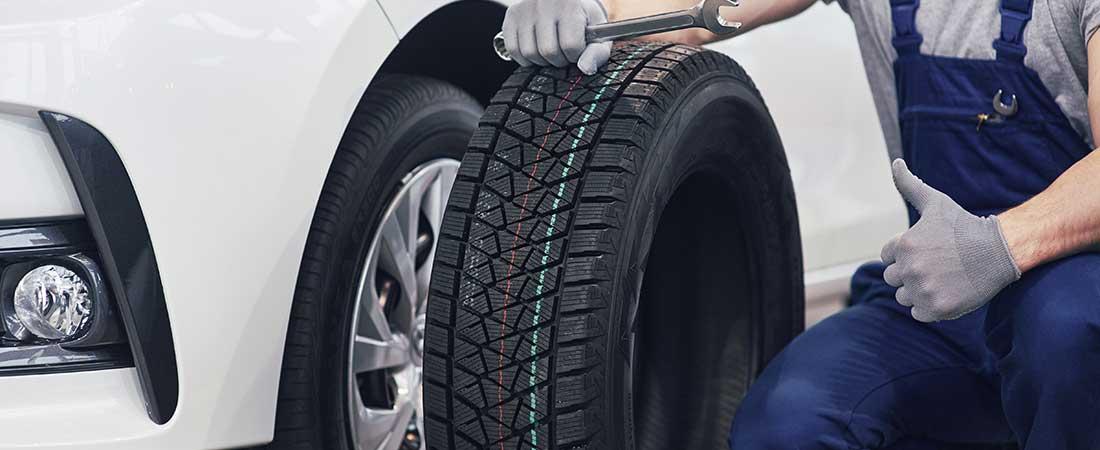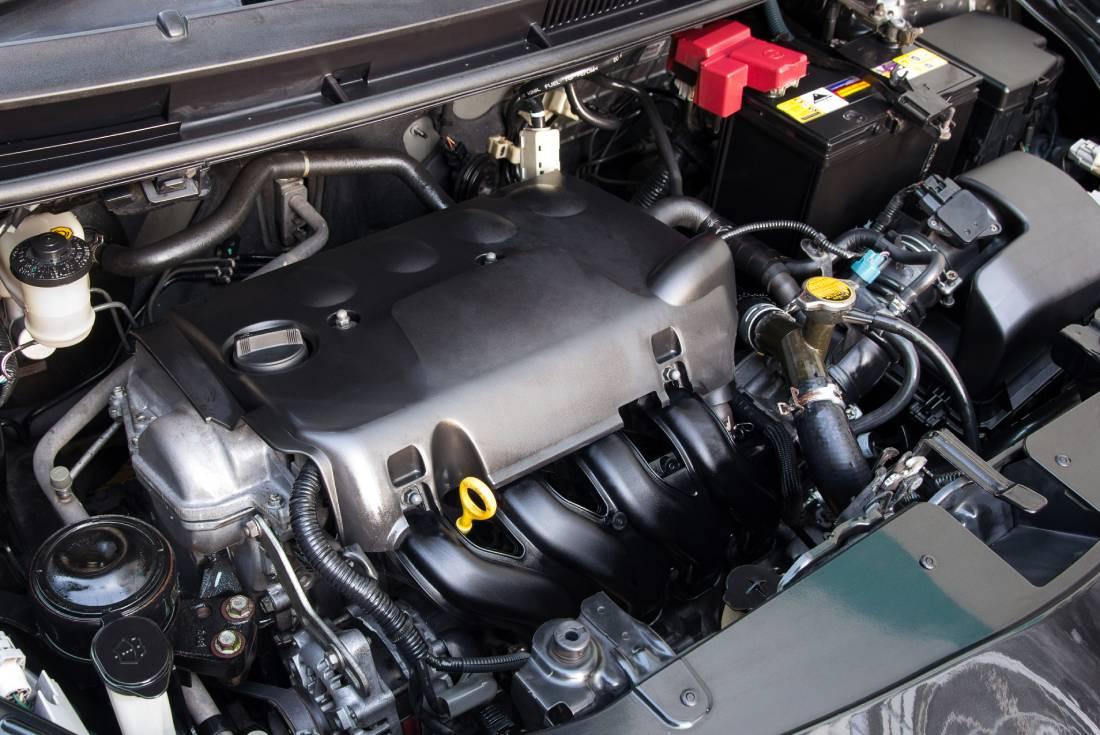
- The Meaning of the Numbers on the Tire
- The Meaning of the Letters on the Tire
- What are the speed classes and the maximum speeds (km/h) that the tires can reach?
- How to Tell the Year of Production of the Tire?
- Why Are Tire Sizes Important?
- How to Choose the Right Tire?
- How to Calculate Tire Size?
- Is It Necessary to Know the Meaning of Tire Sizes?
- Can the Tire Sizes of the Car be Changed?
- Why are Tire and Rim Sizes Classified as Standard Sizes?
Tires, which are an indispensable part of vehicles, have many more important tasks as well as enabling the vehicle to move. These;
- Transferring engine power to the road when braking and cornering
- Steering the vehicle safely regardless of climatic conditions and road conditions
- Ensuring the comfort of passengers and vehicle driver
- It is to reduce the effect of unevenness on the roads to ensure that the vehicle is used for a long time.
As you can see, tires are extremely important for the safety of the vehicle and its driver. For this reason, it is beneficial for vehicle owners and drivers to know the tires closely and to know all the details about the tire.
One of the important details to know about the tire is what the letters in the tire size mean. Because combinations such as letters, numbers, and signs on the tire help us to have information about the tire in many ways.
The compatibility of tire sizes and rim sizes is effective in the ideal performance of the tires. Safe driving can be adversely affected by non-compliance. You can read the rest of our article to find out what the letters in tire sizes mean and what the numbers tell us.
The Meaning of the Numbers on the Tire
The numbers that can be easily seen on the tire sidewall have attracted the attention of almost everyone. Have you thought about what these numbers mean or signify? Considering that there are different tire sizes, it can be assumed that these numbers are used to express tire sizes.
Tire size varies according to the characteristics of the vehicles. For this reason, it is important that the tire size is appropriate when purchasing tires. To better understand what each of the numbers on the tire means, let's assume that it is a tire with the 175/75 R 20 92 T combination on it. The meaning of the numbers on the tire according to this combination is as follows:
- 175: Indicates the floor width of the tire. It is read in millimeters.
- 75: Expression of the ratio of the sidewall width of the tires to the floor width as %.
- 20: It refers to the inner diameter of the tire, that is, the rim size. Inches are used as the unit of measure.
- 92: Indicates the load index on the tire.
The Meaning of the Letters on the Tire
Like numbers, the markings on the tire are also used to express important details. You can get detailed information about the tire by examining the letters on the tire. The meaning of the markings on the tire is as follows.
- TL: The letters TL, known as tubeless or duplex, indicate that an inner tube is not required to use the tire. It can also be defined as an inner tube.
- TT: The letters TT, which stands for Tube -Type, indicates that an inner tube must be attached to the tire in order to use it.
- RF: The letters RF, expressed as Rain Force, indicate that the tire is reinforced.
- XL: indicates that the tire has an above-normal load capacity for its dimensions.
- P: Indicates that it is a passenger car tire.
- LT: Indicates that it is a tire suitable for pickup truck use.
- A: Indicates that it is a commercial vehicle van tire.
- The letters J, K, L, M, N, P are used to express the maximum speed of the tire.
Tubeless tires are lighter than tubeless tire models. In this way, it saves more fuel.
In addition to the letters above, the tire also has the letter R, T, and V. The letter R on the tire means that the tire is radial. The T mark indicates that the tires are spare tires. The letter V on the tire is used to express the speed class of the tire. It is important to pay attention to the markings, letters, and numbers on the tire when purchasing tires.
What are the speed classes and the maximum speeds (km/h) that the tires can reach?
One of the important information on the tire is the speed limit the tire. This information, expressed in letters and indicating the maximum speed of the tire in question, facilitates the selection of the ideal tire. You can examine the letters and speed limits used to indicate the speed limit on the tire in the table below.
How to Tell the Year of Production of the Tire?
Almost everything we use as part of everyday life has a production date and an expiration date. This also applies to tires. Because the tire has a shelf life and a service life. The shelf life of the tire is 10 years. Even if the tire is kept without being used at all during these 10 years, the tire should not be used at the end of the 10 years. This is what is meant to be explained by the expression ”shelf life". The tire also has a service life. This time varies depending on the use of the tire. The tread depth determines the service life of the tire. The service life of the tire is regulated legally. Accordingly, the tire can be used until the tread depth decreases to 1.6 mm.
In general, based on the products we use, we would expect to see an expiration date on the tire. However, the tire does not specify the expiration date, but the year of manufacture of the tire. The year of production of the tire is expressed with a 4-digit number. For example, combination 4719 shows us exactly when the tire was produced. The last 2 digits refer to the year of production. Accordingly, the tire was manufactured in 2019. The first 2 numbers indicate which week of the year the tire was produced. According to our example, the tire is 47. Since it is produced per week, the production date is the 47th of 2019. the week is November 21 - 27, 2019.
When buying tires, it is necessary to pay attention to the production date. Again, if we proceed from the sample date; a tire with a production date of November 2019 has left 4 years behind its shelf life. After buying this tire, we only need to use it for 6 years. In this case, it is recommended not to buy this tire. Because a tire is one of the equipment that ensures driving comfort and driving safety. Buying a new dated tire is more useful in every respect.

Why Are Tire Sizes Important?
A wide variety of tests are carried out during the production of tires. The purpose of these tests is to ensure that maximum efficiency can be obtained from the tire. Tire measurements are directly related to the performance of the vehicle. For this reason, it is important to use tires in the dimensions recommended by the manufacturer for vehicles.
The tire size affects the fuel consumption of the vehicle. For example, if the tire is larger than the recommended dimensions, it leads to an increase in tire grip in dry weather conditions. In this case, since the contact with the road increases, the friction surface also increases. As a result, performance decreases, and fuel consumption increases. Using tires other than the recommended tire sizes also causes the following situations to occur other than fuel and performance:
- More load on the engine
- The vehicle does not pass TÜVTÜRK or Pilot Garage inspection
- Vehicle skids on corners
- In case of any traffic accident, the driver is found to be at fault.
How to Choose the Right Tire?
When it comes to buying tires, the budget is usually acted on. However, in order to buy the right tires for a vehicle, attention must be paid to the technical details of the tire. It is useful to pay attention to the following details in order to make the right tire selection:
- The markings and letter-number combinations on the tire sidewall should be examined. It is important that these combinations are compatible with the vehicle model.
- The tire must be suitable for seasonal conditions, terrain or city conditions. For example; Tires that can be used in all seasons are recommended for cities with an average air temperature of 7 degrees and above. However, winter tires are recommended for cities with cold weather.
- It is necessary to pay attention to the fuel efficiency of the tire. Tire efficiency is expressed by the letters A - G. The letter G on the tire indicates that the tire has low efficiency.
- The tire must be suitable for the vehicle load class. It is necessary to check the load value of the tire and pay attention to the speed index.
How to Calculate Tire Size?
We can use the combination we gave as an example above to show how the tire size is calculated. The 175/75 R 20 92 T combination is located on the side of the tire. Accordingly, the part of the tire in contact with the ground is 175 millimeters. 75 refers to the size between the part of the tire in contact with the ground and the rim. It means 75% of 175 millimeters. The number 20 indicates the rim diameter of the tire. The tire in the example combination has a rim diameter of 20 inches.
In fact, there is no need to calculate the tire size to buy the ideal tire for the vehicle. It is sufficient to compare the values recommended in the vehicle owner's manual with the values found on the tire sidewall.
Is It Necessary to Know the Meaning of Tire Sizes?
It is important to know the meaning of tire sizes during tire selection. This makes it easier for you to choose the right tire for your vehicle. Even if you are not doing tire shopping or changing, it helps you to check to make sure that the correct tire is installed on your vehicle. The right tire reduces fuel consumption while providing driving safety. It also extends the life of the engine and increases the performance of the vehicle.
Can the Tire Sizes of the Car be Changed?
It is possible to install different tire sizes to the vehicle mechanically. However, changing the tire sizes has technically harmful consequences. For this reason, it is not recommended to change the tire sizes at all.
Why are Tire and Rim Sizes Classified as Standard Sizes?
Tire dynamics vary according to tire sizes. All dynamics during production are determined according to test results. This is why millimeter differences are of great importance. Critical disadvantages may arise due to millimeter differences. To ensure driving safety, certain criteria are taken into account around the world and standard values are determined accordingly. The main purposes of classification of tire and rim sizes in standard sizes can be listed as follows:
- Addressing all vehicles on the market
- Limiting the number of tires with similar characteristics
- Determining the useful life of tires
Knowing the expiry date and replacement time according to the tire type helps to increase the driving performance. Therefore, it is useful to have detailed information about the tire.





